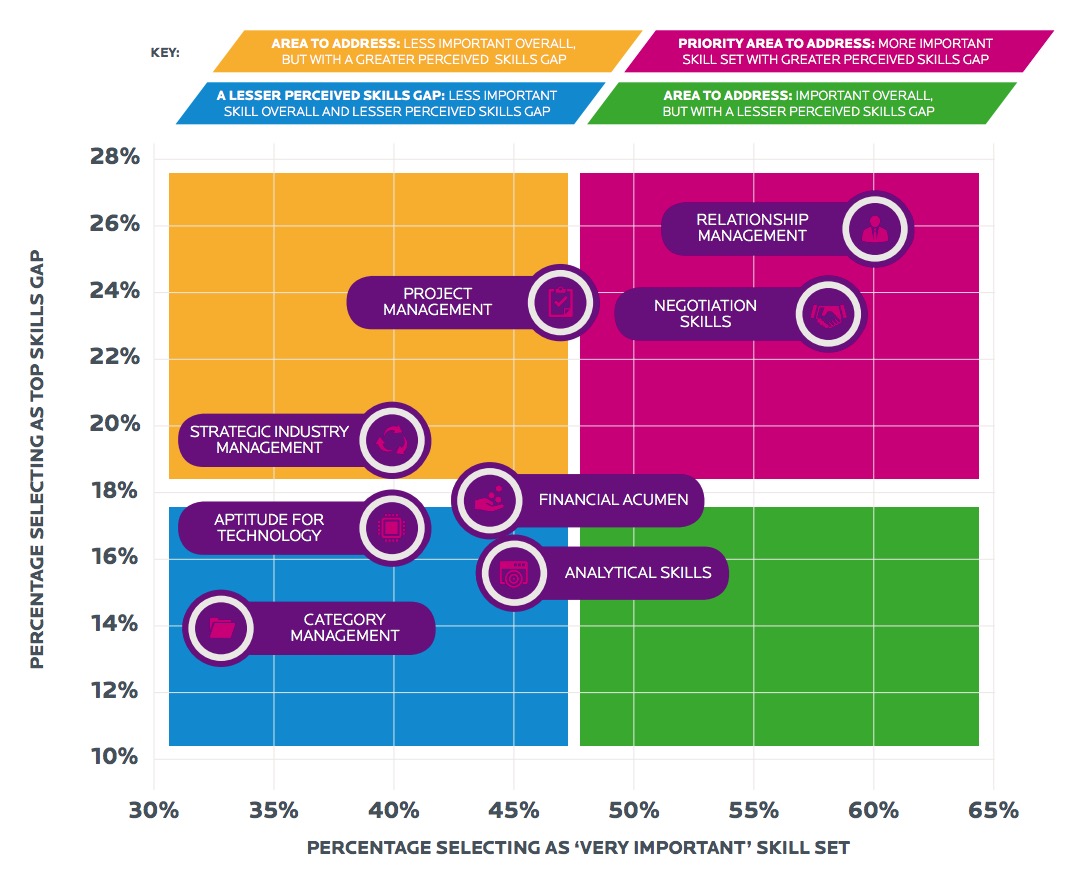Throwback Thursday – 4 Challenges Procurement Faces & How to Overcome Them
Ask the question, “What are the challenges procurement faces?” and you’ll get the same responses time and again. So how do we overcome the key challenges and move on?
We’re looking back at some of Procurious’ most popular content from the past 12 months. First up, we revisit an article on the 4 challenges procurement faces, and how to overcome them.
Why? Well, the nature of these challenges never seems to change, so by shining a spotlight on them again, we aim to start a conversation on how to finally put these challenges to rest!
Challenges Procurement Faces
Results from a newly published study shine a light on an assortment of internal challenges facing the procurement function, as well as its changing role as we enter an uncertain future.
Xchanging has issued the first results from its 2015 Global Procurement Study of more than 800 procurement decision makers.
These first set of results look at internal challenges and the new role of procurement, covering misaligned KPIs, lack of internal engagement, capacity issues and skills gaps.
Challenge #1: Misaligned KPIs
Despite the now wide ranging responsibilities of procurement decision makers, 47 per cent name ‘cost savings realised’ as their number one KPI. The top four KPIs listed are all cost related. CSR/Sustainability impact, by comparison, is ranked as the least important at just 1 per cent.
Chirag Shah, Executive Director, Xchanging Procurement comments: “These results strongly indicate that there is a problem with the current KPI structure. Procurement teams are responsible for many business critical functions. From risk management to sustainability impact, procurement is engaged in activities that far surpass its cost-cutter legacy.
“The metrics against which organisations track procurement’s performance do not line up with what procurement actually delivers.”
Challenge #2: Lack of Internal Engagement
63 per cent of procurement decision makers globally identify ‘internal stakeholder engagement’ as a challenge, with 14 per cent claiming it is as an extreme challenge.
Shah explains: “Procurement’s strategic capability isn’t being understood and because of that, it isn’t appropriately valued. Not only is this causing problems for procurement performance, it is also restricting business success. By not engaging with the procurement team and fully understanding what it can deliver as a strategic partner, companies are limiting their potential for growth.”
CPOs clearly feel more internally valued than procurement middle management. 60 per cent of CPOs feel that procurement is a C-level priority in their organisations, compared to 37 per cent of procurement middle managers.
Shah makes a number of recommendations based on the findings: “To improve internal engagement, and properly communicate the value of procurement, procurement departments need to consider tactics such as introducing governance boards, using score cards to track deliverables, leveraging analytics and reporting tools to demonstrate results and even re-labelling team members with non-cost centric job titles that relate to their roles, for example ‘Risk Manager’ or ‘International Consultant’”.
Challenge #3: Capacity Issues
According to Xchanging’s numbers, 80 per cent of procurement decision makers identify ‘procurement team time pressures’ as a challenge, and 20 per cent as a major challenge. This implies that the majority of procurement departments are facing major capacity issues.
Surprisingly, in comparison, ‘talent shortage’ is considered an operational challenge by far fewer respondents, with 59 per cent citing it as a challenge, and only 12 per cent as a major challenge.
The number citing talent shortage as a concern drops to less than half (40 per cent) when asked if it’s a problem for the industry as a whole.
Challenge #4: Skills Gap
The skills considered most important for procurement professionals are ‘relationship management’ (88 per cent consider important, 59 per cent very important) and ‘negotiation skills’ (88 per cent and 58 per cent).
Significantly, these are also the areas where procurement decision makers identify the greatest gaps in skill set provision; around a quarter cite ‘relationship management’ (26 per cent) and ‘negotiation skills’ (23 per cent) as areas with the greatest gap in skill set provision. 23 per cent also name ‘project management’.
Want to read more about the challenges procurement faces? You can download the full report here.

